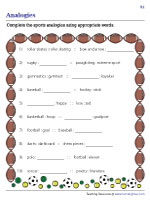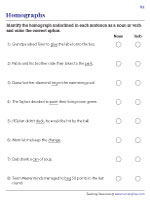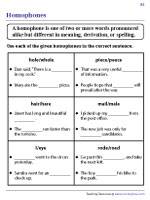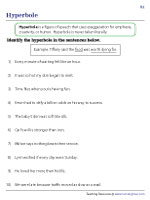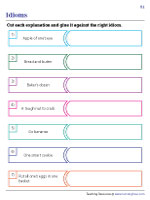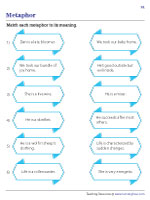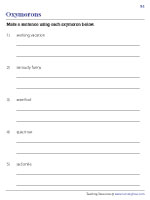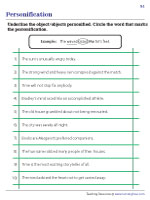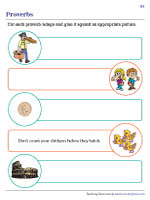5th Grade Figurative Language Worksheets
Our free, printable 5th grade figurative language worksheets teach kids the art of embellishing writing using devices such as similes, metaphors, and idioms. Additional focus on proverbs, adages, and analogies widens the scope of this collection.
Select Grade 5 ELA Worksheets by Topic
Explore Fifth Grade Figurative Language Worksheets
Sport is the exciting, central theme of these exercises, where children are required to complete the analogies using appropriate words.

Is the Homograph a Noun or a Verb?
Recognize whether each underlined homograph performs the function of a noun or a verb, and color the circle under "noun" or "verb" as appropriate.

Completing Sentences with Homophones
Make use of each homophone pair to complete the sentences, designating the words based on the suitability of their meanings to the contexts.

Identifying Hyperbole in Sentences
Go over each sentence, keeping an eye out for any exaggerated comparisons that may pop up to surprise you, and underline it when you spot it.

Explain these food-themed idioms, snipping along the dotted lines to cut out the word cards of their descriptions and glue them where they belong.

Dig deep to figure out exactly what each metaphor on the left means, and pair it up with its meaning displayed on the right in these exercises.

Matching Animals or Objects to Onomatopoeia
Keep in mind the sound associated with each object or animal, as you match the pictures on the left to their onomatopoeic words on the right.

Making Sentences Using Oxymorons
Give free rein to your creative spirit as you come up with well-framed sentences of your own, incorporating each oxymoron meaningfully.

Identifying Personifications and Objects Personified
Underlining the object personified is only part of the task in these exercises that also involve circling the word that marks the personification.

Proverbs and Adages | Cut and Glue
Cut out each word card featuring a proverb or an adage and glue it beside the picture that serves as a representation of its meaning.


 Digitally Fillable Worksheets
Digitally Fillable Worksheets Worksheets by Grade
Worksheets by Grade Grammar
Grammar Vocabulary
Vocabulary Figurative Language
Figurative Language Phonics
Phonics Reading Comprehension
Reading Comprehension Reading and Writing
Reading and Writing